'More of a family member than a car': 50 years of the Volkswagen Polo
Half a century? That’s a milestone for humans, never mind cars, so join us as we raise the bunting, stuff our faces with cake, and cheer for one of our favourite little memory makers.


‘Your first car, your trip to the seaside, your first taste of independence — and the ability to choose for yourself where the next adventure will take you,’ says Volkswagen’s Thomas Schäfer. ‘The Volkswagen Polo has been at the heart of so many unforgettable moments and stories.’
He’s not wrong. The Polo might be one of the nation’s most loved cars. Most of us have either owned one or known someone who has. While it was designed to be efficient, affordable, innovative and practical, the Polo's heart-stirring personality means that, for many, it’s more of a family member than a car.
I’ve never owned a Polo, but my neighbour had a black Mk2 GT. It was a stunning example, often washed and polished at the kerbside with T-Cut glossing its black bumpers. He’d admire it from his living room and anyone who went near it was shooed off by a soft-bristled sweeping brush and profanity.
Volkswagen had (almost) every avenue covered in the 1950s and ‘60s with its Beetle and vibey Type 2 microbus, but both were aging rapidly. Fresh blood was needed. Soon enough, the 1973 Passat, 1974 Golf, and 1975 Polo arrived: three cars that families of varied shapes and sizes could slot into.
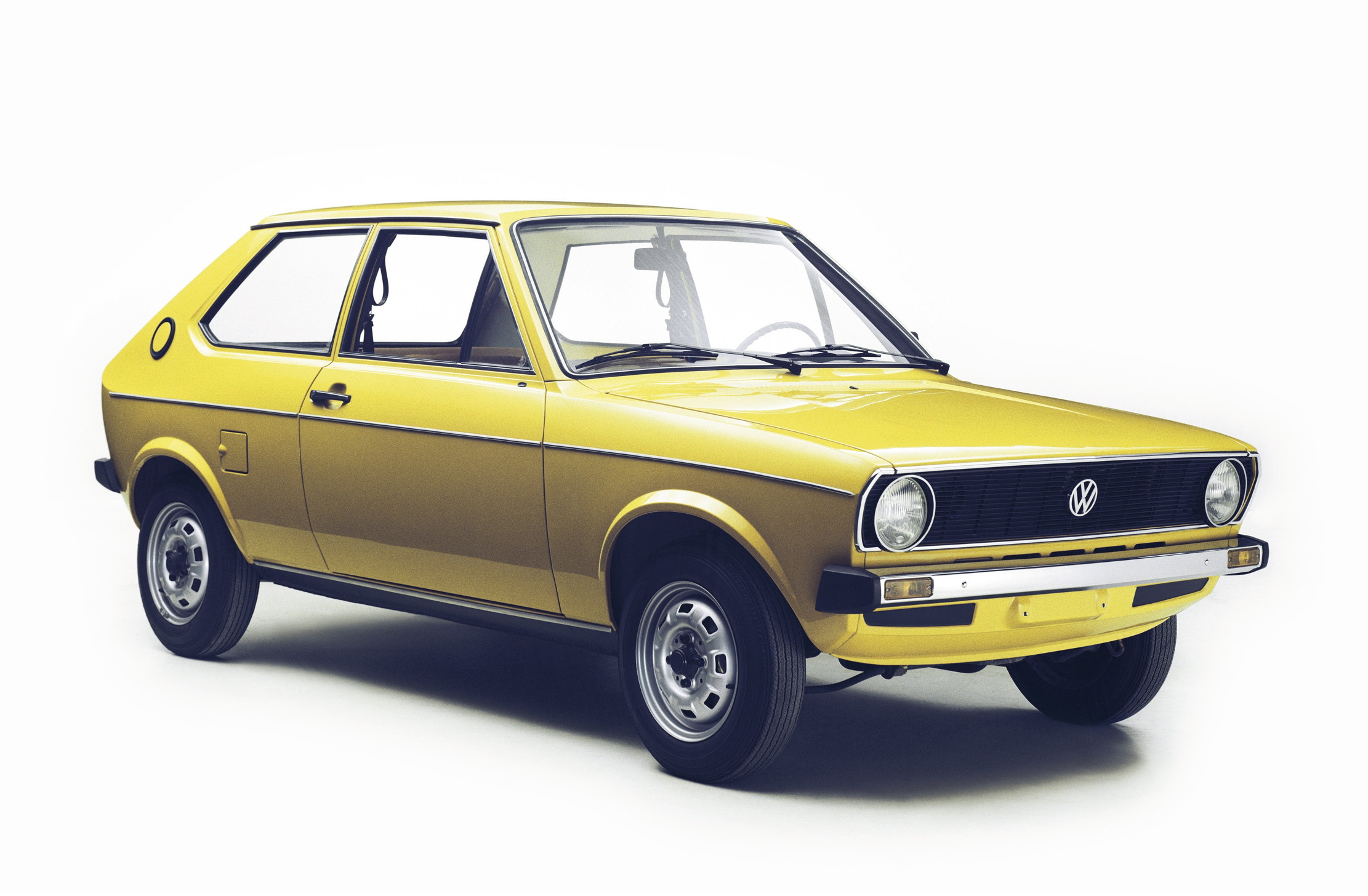
The iconic Volkswagen Polo Mk1.
The Polo’s birth, however, was not conventional. Small, front-wheel drive cars with large rear hatches sold like Kit Kats in the early 1970s, something Audi noticed with the Renault 5 and Fiat 127. Joining the trend meant thinking fast. Soon enough, Audi’s first hatch, known as the 50, rolled off the production line in Neckarsulm, Germany.
The Volkswagen Group had taken control of Audi by this point, meaning shared parts between brands, and just six weeks after the Audi 50’s launch, Volkswagen rebadged it as a Polo, a name derived from Polar winds rather than circular mints. Both cars competed for three years, resulting in a fight to the death. Odd, you may think, considering these were identical cars, built by the same group, with only a badge to separate them. But things weren’t that simple.
The Polo (again, oddly) was cheaper, and buyers could choose from an array of four-cylinder engines (unlike the Audi) mated to a four-speed manual gearbox. Most of these powerplants delivered between 40 and 50bhp, but ‘adrenaline’ seekers could opt for a ‘GT’ with 60bhp.
Exquisite houses, the beauty of Nature, and how to get the most from your life, straight to your inbox.
Snails were quicker off the line, but the Polo was out accelerating the Audi where it mattered, which was sales, and in 1978 the 50 was binned in favour of the Volkswagen: 500,000 first-generation Polos were sold worldwide versus the Audi’s 180,828.
Following a 1979 Mk1 facelift (a revised dash and plastic bumpers), the Mk2 Polo arrived in September 1981 and was 3.66m long versus the Mk1’s 3.5m, its design was also sharper with a steeper boot lid.
Buyers could also choose from three body styles: a three-door hatchback, a two-door ‘Derby’ saloon and a three-door estate, aptly named the ‘breadvan’. In 1986, a hot 1.3-litre supercharged version with 115bhp appeared alongside various frugal diesels. It was a hit; more than 2.7 million units were sold during the Mk2’s 13-year production run.
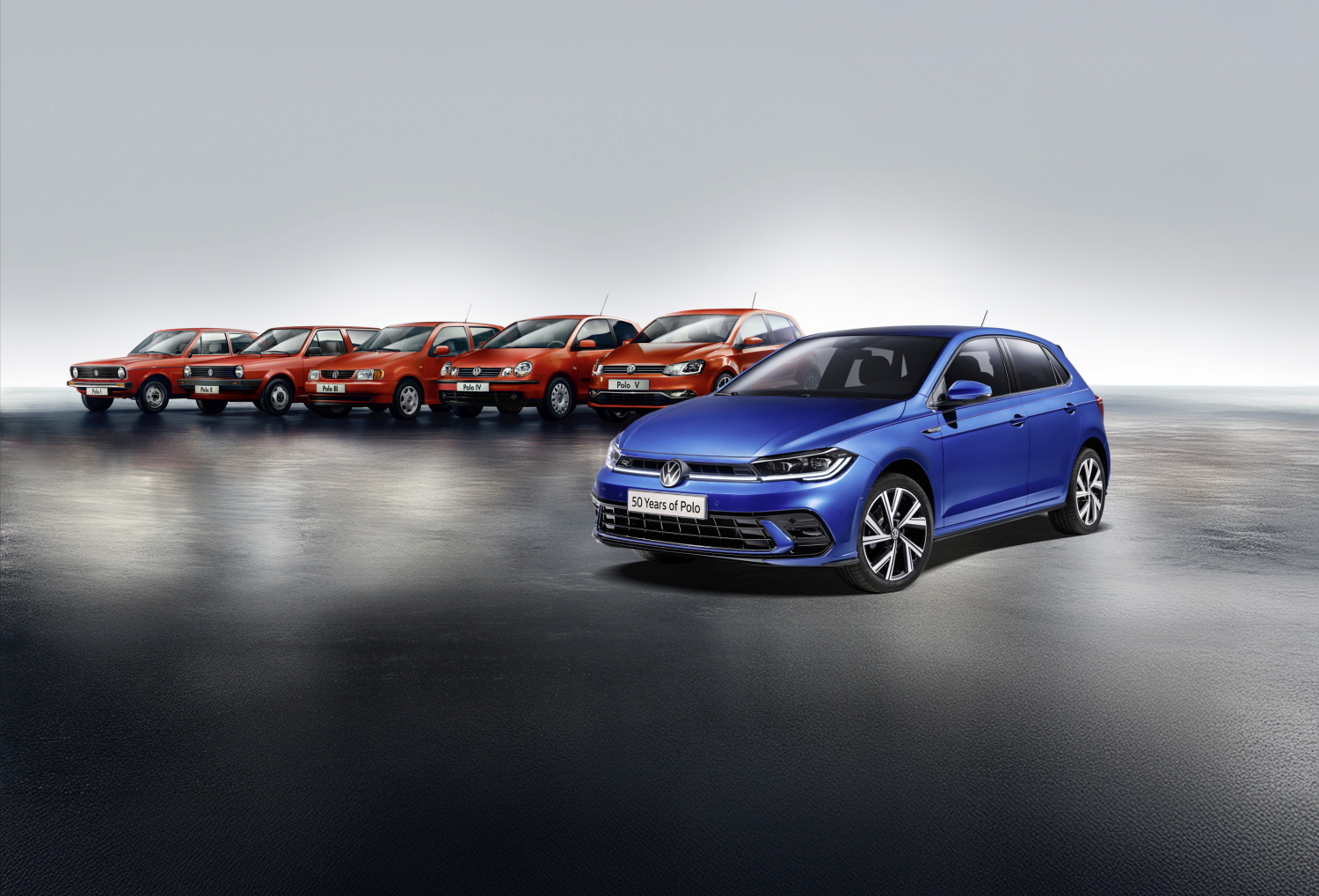
Young car enthusiast and 1994 Mk2 and Mk5 GTI Polo owner Aidan Miller has been around Volkswagen from a young age. ‘We’ve always been a VW family. I also own a Vento; I was brought home in that very car after I was born, so it's quite special. Likewise, my grandad owned Beetles, Passats and Polos. My dad had Polos growing up and my sister owned three!’
Aidan yearned for an older Volkswagen, and after seeing various Polos at car shows, the seed was planted. ‘I took to Autotrader and found my first Polo. It had a full-service history and original dealer plates and had only done 84,000 miles. What caught me was its originality; I can trace its 31-year history right back to the first owner.’
He’s since driven his Mk2 Polo from Cumbria to Bicester, a 470-mile-round trip, to a Volkswagen press event. ‘I try not to take on the motorway because it’s so original and I’m scared it will get stone chipped, but this was a unique event that I couldn’t miss.’
Mk2 facelift cars were built in Spain rather than Germany, and Aidan has a large trip planned to celebrate the Polo’s 50th. ‘I want to drive to Spain and back either next year or this year. I reckon I can do it with one tank of fuel.’
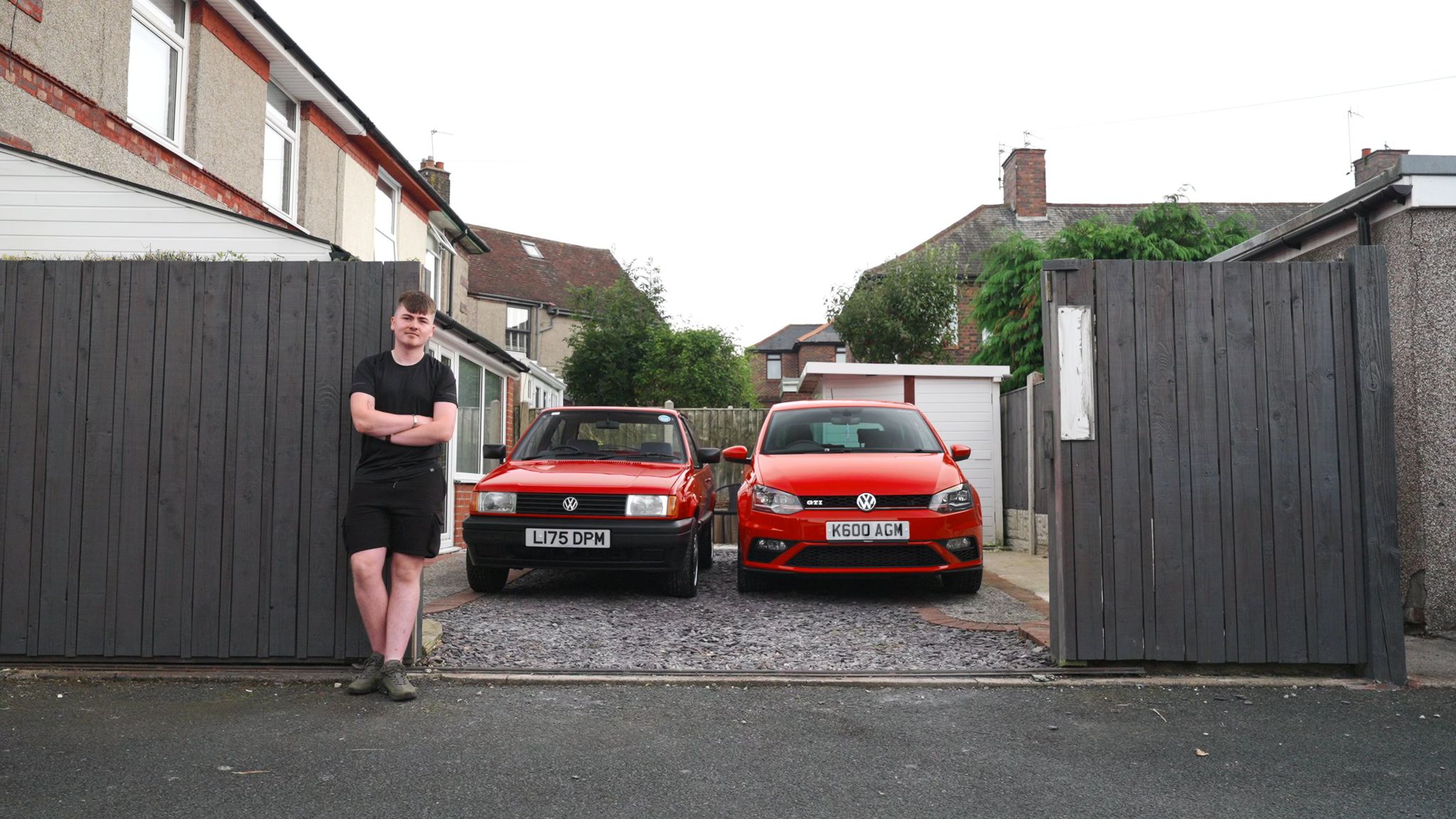
Aidan Miller with his Mk2 Polo and his Mk5 GTI.
To the 1990s. Hip-hop was rising and its artists boasted vibrant clothes and chains large enough to moor an oil tanker. Similarly, boxy car designs were swapped with smoother shapes and neater lines.
Volkswagen followed suit with the 1994 Mk3 Polo. Not only was its bodywork bulbous, but its dimensions had increased, and it now featured modern safety tech like airbags, ABS and belt tensioners. Its platform was shared with the Seat Ibiza to cut costs and for the first time, the Polo was offered with five doors. Similarly, entry-level cars had a modest 50bhp 1.0-litre petrol engine, while the range-topping hot GTI had a 1.6-litre 125bhp lump.
1995 arrived and Volkswagen dropped its multicoloured Polo Harlequin, something that rippled for years and conjured a cult following. Did we need it? Probably not, but we’re glad we got it.
Unlike the Slinky and Penicillin, the Harlequin was no accident, but instead a sales tool, designed to showcase the new Polo’s personalisation options and modularity. It’s said Volkswagen built 3806 Harlequins and only 25 are registered in Britain today. The Harlequin is a monolith; a reminder of when planning departments could be overzealous with designs.

The 'Harlequin'. Perhaps a touch overzealous.
Polos have always been known for their reliability. Just ask 1996 Mk3 owner Christian. In 2022, He travelled 8,881km (5,518 miles) during nine weeks through Europe, England and Ireland in his Polo, while towing an Eriba caravan. Christian’s no stranger to epic road trips, having previously driven from Germany to Ireland.
His goal was to traverse Ireland’s 2,500km Wild Atlantic Way coastal route, but first, he had to drive from Germany.
‘I ordered my Polo new back in 1996. It now has 225,000km (139,808 miles) on the clock. The car was freshly serviced before the trip, therefore, I didn’t expect any disruptions. However, it died on the M3 motorway and was temperamental afterwards. This turned out to be a plastic stop buffer on the throttle valve that had melted, but this was quickly fixed. Throughout my nine-week trip, this was the only issue with the car.’ Christian is currently planning an even larger European trip in his Polo.
The Mk3 was superseded by the Mk4 in 2002. This followed in the Golf’s footsteps with its rounded design, cool blue interior lighting, soft-touch plastics and sturdiness — a nod to modernity. Once again, Volkswagen ensured buyers had varied engine choices, while standard safety tech, like front and side airbags, gave the Polo impressive protection credentials.
Introduced in 2009 was the longer, lighter and wider Mk5. It was dull, but was arguably the most mature small car money could buy, and as a result, it won many titles including ‘World Car of the Year’ and ‘2010 European Car of the Year’.
And finally, the Mk6 and Mk7 Polo. The former was produced from 2017, and the latter from 2021. Both generations are handsome and, like many kids nowadays, are spoiled with tech. Still, they remain affordable, efficient, innovative and practical, just as Volkswagen intended.
Dog and Volkswagen lover Ryan Aitkenhead owned a Mk7 Golf GTI before hopping to a Mk7 Polo. ‘I was after a wallet-friendly car that ticked the boxes for practicality and tech. Deep down I knew I wanted a Polo.’
Ryan and his dog Sam went on various road trips with the car; it also accompanied him as he discovered his photography hobby. ‘Sam loves a car trip, but the Polo got him all excited compared to other cars. This was probably because of the Polo’s plucky spirit. It, too, made me smile. She was honest and fuss-free; a go-anywhere car.’
Sadly, Ryan’s Polo was written off during a Manchester trip. ‘The Polo looked out for me during this ordeal. Luckily, no one was badly injured, and the excellent SOS system took care of emergency calls; a nod to modern safety tech. Will I buy another? Absolutely.’

A VW Polo in its natural habitat — driving too quickly around the British countryside. Thankfully this 2016 Polo R WRC car knows what it's doing.
As discussed, the Polo is 'efficient, affordable, innovative and practical'. But we must also remember that the Polo has an unruly side.
Rallying is a savage sport that sees high-powered four-wheel drive vehicles traverse complicated terrain through challenging environments. Subaru, Lancia and Audi are all respected manufacturers here, but a Polo R WRC rally car won 43 of 53 rallies it entered from 2013 to 2016, making it one of the most successful rally cars of all time.
From humble first cars to family wagons and multicoloured unicorns, Volkswagen has shown us how dynamic a small production car can be. But what also makes the Polo special is the memories we made in it. The first car after passing your test. Driving to university and back. Sleeping in them after parties. Stealing a kiss. For so many of us, during those formative years, those memories will be framed with a Polo in the background.
And, like that, our party is over. The cake is gone, and the faint smell of cheap champagne and candle smoke fills the air. The Polo now marches towards its 51st birthday. 51 doesn’t have the same ring as 50, but we do hope the Polo sees 60.
The small hatchback might soon become a protected species. We’ve already lost the Ford Fiesta, Seat Mii, Suzuki Ignis, Renault Twingo and Citroen C1. So please, Volkswagen, don’t kill the Polo. It’s shaped generations and will continue to do so.

Matthew MacConnell is a motoring journalist who has written for Forbes, Fleet World, The Drive, and Classic Car Weekly. He also likes to natter about vans, trucks, and electric bikes
-
 The golden eagle: One of the Great British public's favourite birds of prey — but devilishly tricky to identify
The golden eagle: One of the Great British public's favourite birds of prey — but devilishly tricky to identifyWe are often so keen to encounter this animal that ambition overrides the accuracy of our observations, writes Mark Cocker.
-
 When was the first ever Glastonbury festival? Country Life Quiz of the Day, June 26, 2025
When was the first ever Glastonbury festival? Country Life Quiz of the Day, June 26, 2025Thursday's quiz looks at a landmark date at Worthy Farm.
-
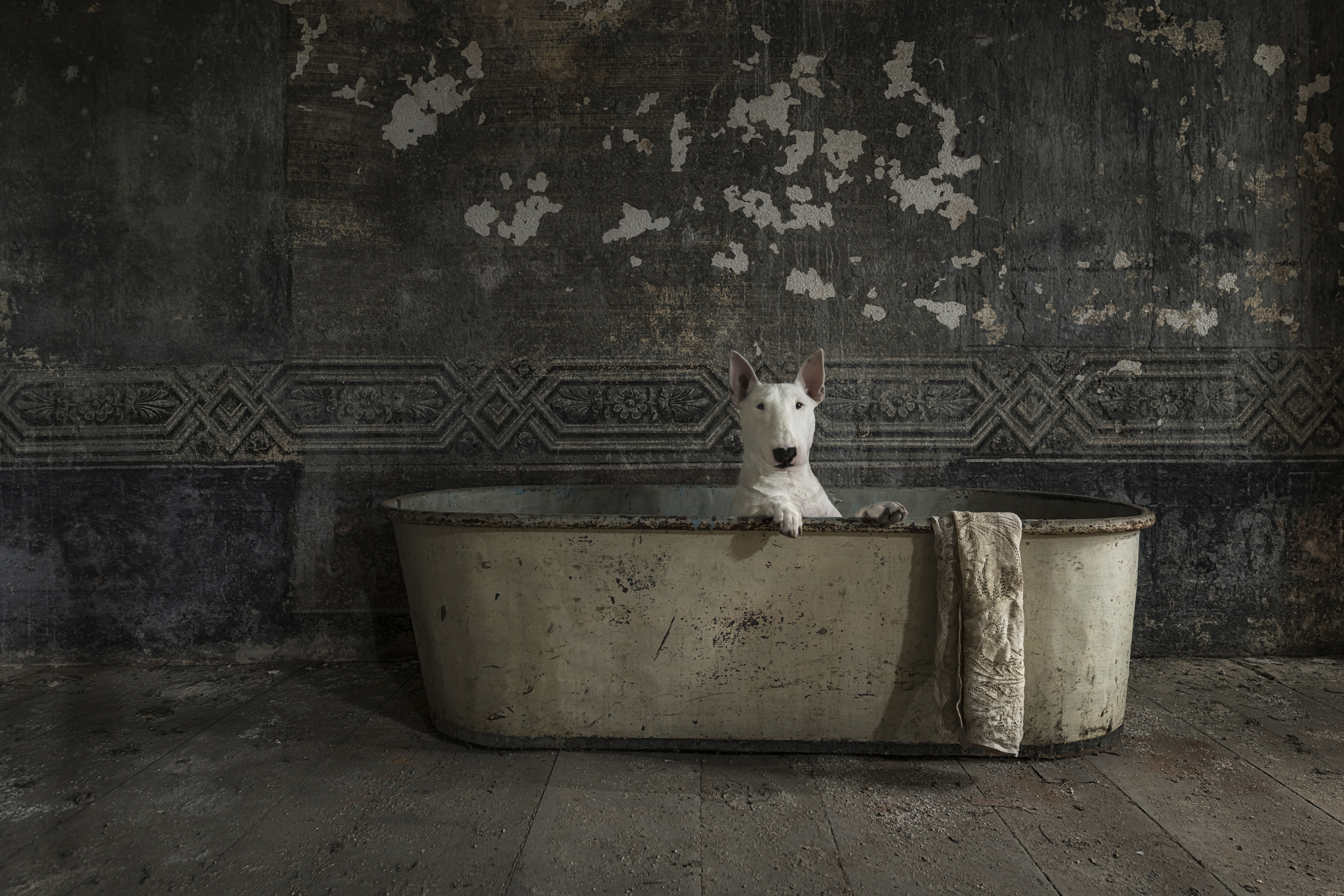 Canine muses: The English bull terrier who helped transform her owner from 'a photographer into an artist'
Canine muses: The English bull terrier who helped transform her owner from 'a photographer into an artist'In the first edition of our new, limited series, we meet the dogs who've inspired some of our greatest artists.
-
 The successor to the 'most beautiful car of the 20th century' is smooth, comfortable... and ends up highlighting everything that's wrong in car design today
The successor to the 'most beautiful car of the 20th century' is smooth, comfortable... and ends up highlighting everything that's wrong in car design todayThe DS No. 4 traces its lineage back to the Citroën DS, a car so extraordinary that people described it as looking 'as if it had dropped from the sky'. And while the modern version is more friendly to the earth, says Toby Keel, it's also worryingly earthbound.
-
 Richard Rogers: 'Talking Buildings' is a fitting testament to the elegance of utility
Richard Rogers: 'Talking Buildings' is a fitting testament to the elegance of utilityA new exhibition at Sir John Soane's museum dissects the seminal works of Richard Rogers, one of Britain's greatest architects.
-
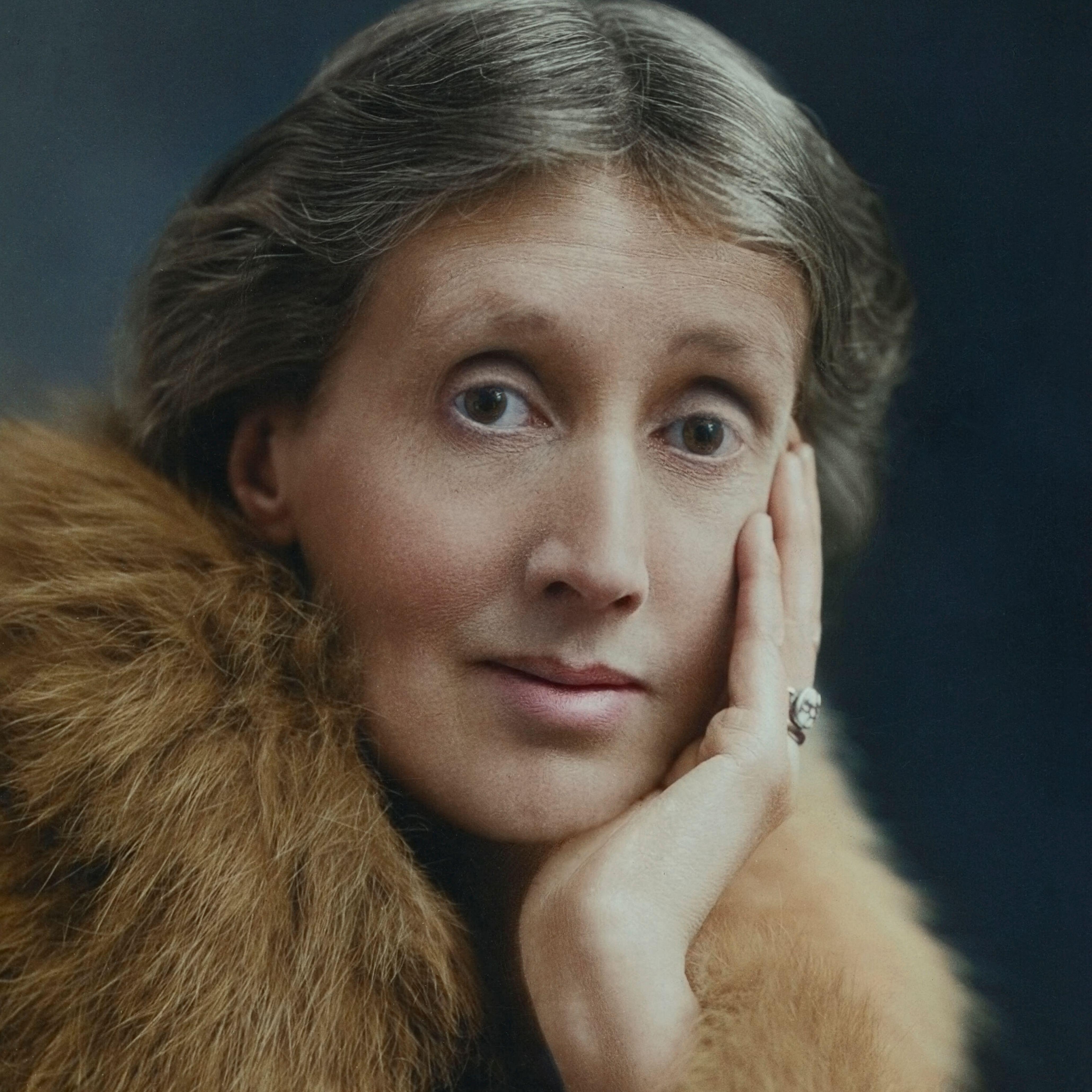 ‘The perfect hostess, he called her’: A five minute guide to Virgina Woolf’s ‘Mrs Dalloway’
‘The perfect hostess, he called her’: A five minute guide to Virgina Woolf’s ‘Mrs Dalloway’To mark its centenary, Lotte Brundle delves into the lauded writer’s strange and poignant classic, set across a single summer’s day in 1920’s London.
-
 300 laps, thousands of tires, 24 hours of non-stop racing: Up close and personal at Le Mans 2025
300 laps, thousands of tires, 24 hours of non-stop racing: Up close and personal at Le Mans 2025At this year's iconic 24 Hours of Le Mans, British car manufacturer Aston Martin returned to the race's top category — and they invited writer Charlie Thomas along for the ride.
-
 Richard Mille: The man who went from carving watches out of soap to making timepieces for Rafael Nadal and Lando Norris — and built a £1bn business in the process
Richard Mille: The man who went from carving watches out of soap to making timepieces for Rafael Nadal and Lando Norris — and built a £1bn business in the processA new coffee table book by Assouline celebrates one of today’s most daring and innovative watch brands.
-
 How to stand out from the crowd in the most British of outfits — morning dress
How to stand out from the crowd in the most British of outfits — morning dressMorning dress has remained largely unchanged since the 19th century, but breaking with convention can be chic.
-
 Homespun wisdom, incontrovertible truths or hackneyed, tired thoughts? A penny for your thoughts on proverbs
Homespun wisdom, incontrovertible truths or hackneyed, tired thoughts? A penny for your thoughts on proverbsWise, world-weary and occasionally cynical, proverbs mirror the human experience and remain remarkably insightful today, discovers Matthew Dennison.